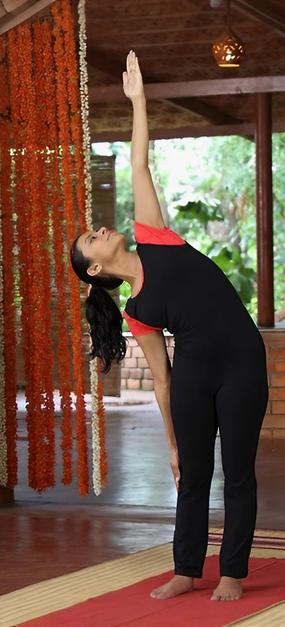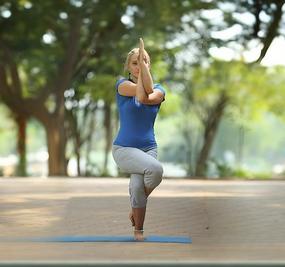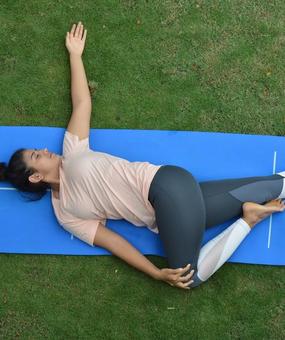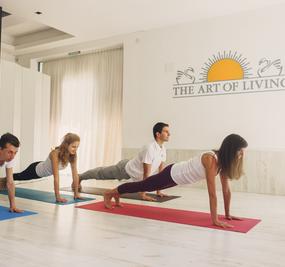Vasistha is the name of one of the most revered saints who was also one of the Saptarishis or Seven Seers. He was the chief author of Rigveda’s Mandala 7. Vasistha had in his possession a cow named Kamdhenu and her child, Nandini. This divine cow could grant Vasistha anything and thus made him wealthy. Hence the name Vasistha derived its meaning – wealthy.
Vasistha – wealthy; asana – pose
This particular pose aids in improving the body’s upper strength and balance.
How to do Vasisthasana
- Come into Dandasana (Plank pose).
- Slowly shift your weight on the right arm and foot as you swing your left arm and foot on it.
- Rest the left foot on the right foot and let the left arm rest on the hip.
- The right hand should be a little in front of the shoulder and not exactly below it. Also, ensure that the palm is pressed firmly against the floor and the arm is not bent.
- As you inhale, slowly raise your left arm till it is perpendicular to the floor with fingertips pointing towards the ceiling.
- Now turn your neck towards the raised arm and gaze at the fingertips for a few breaths.
- As you exhale, bring the arm down to rest on the hip.
- Slowly come back into Dandasana and rest for a few breaths.
- Repeat the process on the other side.
Benefits of Vasisthasana
- Strengthens the arms, wrists and legs.
- Strengthens the abdomen.
- Improves balance.
Contraindications Vasisthasana
People with wrist injuries should avoid doing this pose. Those with elbow and shoulder injury are also advised to avoid this pose.
(beneficial-yoga-poses)
All Yoga PosesPrevious yoga pose: Urdhva Mukha Svanasana
Next yoga pose: Adho Mukha Svanasana














